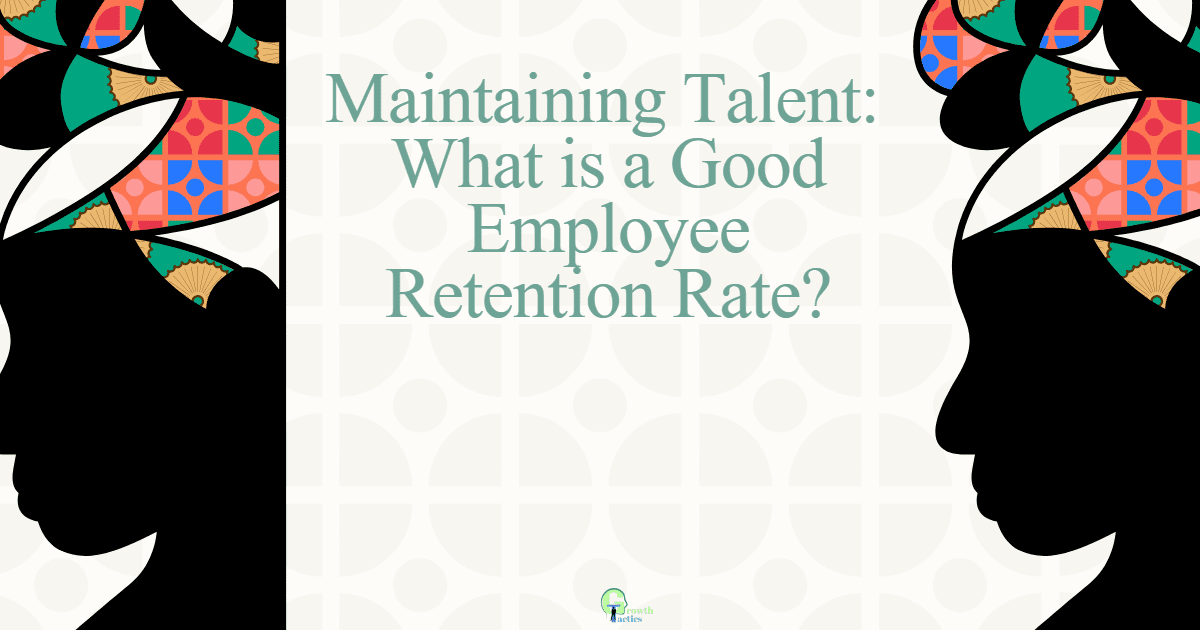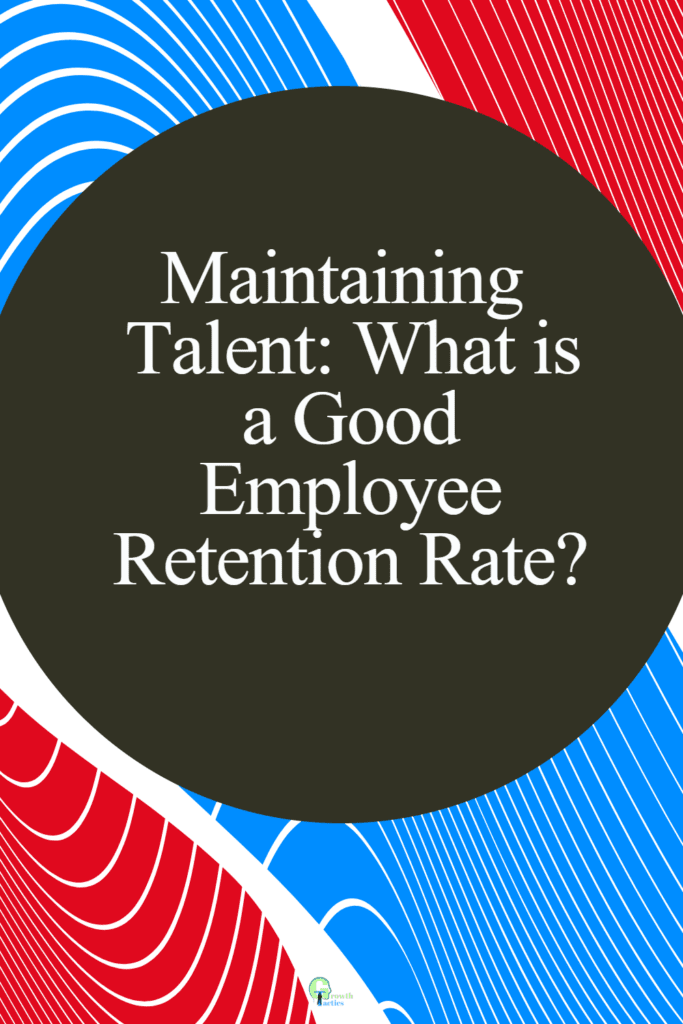In today’s competitive business landscape, retaining top talent can be the difference between success and stagnation. Undoubtedly, a company’s ability to retain its employees speaks volumes about its work culture, leadership, and growth potential. However, one may wonder, what is a good employee retention rate?
This crucial metric has a significant role in your organization’s ability to compete and thrive in your industry. In our guide, we’ll delve into why employee retention matters, how to identify a good rate, and the strategies to optimize for improved employee loyalty and productivity. So strap in and learn how employee retention could transform your business.
The Significance of a Good Employee Retention Rate
Employee retention is more than just a number. It is a critical indicator of an organization’s health and cultural prowess. At the crux of this lies the question: What is a good employee retention rate? Knowing and understanding the significance of a good employee retention rate can be the stepping stone toward superior organizational performance and growth.
A high employee retention rate means that your employees are happy, committed, and investing in your company’s vision. They feel valued and are willing to contribute their best to your organization’s objectives. This directly builds towards a positive company culture that encourages innovation, collaboration, and a strong sense of belonging, which can lead to increased performance levels overall.
Moreover, a good employee retention rate signals stability. When an organization successfully retains its employees, it results in reduced hiring and training costs, lower turnover rates, and maintenance of institutional knowledge. This stability leads to increased proficiency as longtime employees are often more familiar with company processes and customer needs, enabling them to navigate their roles with finesse and skill.
Organizations with high retention rates also experience enhanced customer satisfaction. When employee turnover is low, customer relationships can flourish under the consistent service of trusted staff members. These employees are familiar with the client’s needs, preferences, and history, which enables them to provide personalized solutions and cultivate strong relationships.
Furthermore, a good retention rate accentuates your company’s brand and reputation. High employee retention implies that your organization is a great place to work where employees are treated well and have various opportunities for growth and advancement. Such a reputation can draw high-potential candidates, thereby enhancing your talent pool when you do need to hire.
In conclusion, a good employee retention rate not only reduces costs associated with frequent hiring but also improves customer satisfaction, boosts productivity, and enhances your company’s reputation. However, it’s essential to understand that what’s seen as a ‘good’ employee retention rate can vary from industry to industry and must consider various factors such as the nature of work, market conditions, and more. The key lies in finding the optimal retention rate for your unique type of business and striving to maintain it.
Calculating Your Employee Retention Rate: A Step-by-Step Guide
Understanding your organization’s employee retention rate is essential for monitoring and improving employee satisfaction and productivity. Calculating your employee retention rate ensures you have a clear picture of your company’s performance on this front. Follow this step-by-step guide to determine your business’s employee retention rate.
Step 1: Choose a period to measure
Select a time frame that accurately reflects your organization’s operations. The most common time frames for measuring employee retention rates are monthly, quarterly, or annually. Choose the one that makes the most sense for your business and industry.
Step 2: Determine the number of employees at the beginning and end of the period
Obtain the total number of employees at the start and end of the chosen period. These figures can typically be found within your organization’s HR or payroll system.
Step 3: Find the number of employees retained
Calculate the number of employees who have remained within your company throughout the entire period. This number should exclude new hires during this time.
Step 4: Apply the employee retention rate formula
Now that you have all the necessary numbers for your chosen time frame, apply the following formula to calculate your company’s employee retention rate:
Employee Retention Rate = (Number of Employees Retained / Number of Employees at the Beginning of the Period) x 100
For example, if your company had 100 employees at the start of the quarter and successfully retained 85 employees throughout, your company’s employee retention rate for that quarter would be:
Employee Retention Rate = (85 / 100) x 100 = 85%
Step 5: Compare with industry benchmarks
After calculating your organization’s employee retention rate, it’s crucial to compare your figure with industry benchmarks. These benchmarks may vary by industry and region, so ensure you have up-to-date data. By comparing your retention rate with industry standards, you will have a clearer perspective on how well your company is performing regarding employee retention.
Step 6: Identify trends and areas for improvement
Regularly monitor your employee retention rate and look for any patterns or trends over time. An upward trend would indicate your retention strategies are working, while a downward trend could signal a need for intervention. Analyze your rates alongside employee satisfaction surveys, exit interviews, and other qualitative data to identify areas where your organization could improve to boost retention.
Calculating your employee retention rate is only the first step toward understanding how successfully your organization retains its workforce. Regularly measuring this critical metric, assessing its relationship to business performance, and implementing strategies for improvement can help maintain a good retention rate and foster a positive, growth-oriented company culture.
Strategies to Improve Employee Retention and Reduce Turnover
Understanding and calculating the employee retention rate in your organization is important, but the real value lies in using insights gained from this metric to improve your retention strategy. Here are the essential strategies to help enhance both employee retention and satisfaction. Which ultimately leads to reduced turnover.
1. Offer Competitive Compensation and Benefits
Ensure that your compensation packages are competitive within your industry and region. Regularly review and update these packages to account for changes in economic conditions or industry standards. In addition to a fair salary, offering attractive benefits such as health insurance, retirement plans, or work-from-home options can make a significant difference in employee satisfaction levels, thereby improving retention.
2. Invest in Employee Development
Regular training and development opportunities can greatly enhance job satisfaction as employees feel that their growth and career ambitions are being taken into account by the company. Upskill workshops, leadership development programs, or even paid certifications can boost engagement and commitment to the organization.
3. Cultivate a Positive Work Environment
A positive company culture significantly contributes to employee retention. Creating a working environment that fosters engagement, collaboration, and mutual respect makes employees feel valued and part of a larger cause. Regular team-building exercises, recognizing and celebrating successes, and maintaining transparency in communication are key elements in nurturing a supportive work environment.
4. Provide Opportunities for Advancement
A clear pathway for career progression instills a sense of purpose and direction in employees. Regular performance evaluations coupled with opportunities for promotions or role enhancements not only boost morale but also significantly enhance employee loyalty and retention.
5. Implement Flexible Work Arrangements
In today’s digitally connected world, work flexibility is a highly valued trait that significantly improves employee retention. Whether it’s remote working options, flexible hours, or allowing for a more balanced work-life integration, such policies can lead to a more satisfactory and productive workplace.
6. Encourage Employee Feedback
Inviting and acting upon employee feedback highlights that their opinion and satisfaction matter. Regular surveys, one-on-one check-ins, and open-door policies can facilitate this feedback mechanism, helping you identify potential areas of dissatisfaction before they lead to employee turnover.
7. Recognise and Reward Employee Efforts
Recognition goes a long way in making employees feel valued. Regularly acknowledging and rewarding great work not only boosts employee morale but also fosters a productive and positive work culture that encourages retention.
High employee turnover can be challenging and costly for any organization. However, by implementing these strategies, you can drive a significant improvement in your retention rate, creating a more engaged and motivated workforce – ready to help your company succeed. Remember, retention efforts should be ongoing – regularly evaluate your strategies and adapt them according to the evolving needs of your employees and industry trends.
Understanding Industry-Specific Employee Retention Rates
While having a high employee retention rate is universally seen as positive, it’s also critical to understand that turnover rates and definitions of a ‘good’ retention rate can vary by industry. Specific industries generally experience higher turnover, while others are known for their stability and longevity. Below are some key aspects to consider when understanding industry-specific employee retention rates.
Variations by Industry Type
Different industries experience different turnover rates due to several factors like the nature of work, qualifications required, pay structures, and career growth opportunities available. For example, the hospitality and retail industries often see higher turnover rates due to the high number of part-time and seasonal roles. On the other hand, industries such as finance, technology, and healthcare typically have lower turnover rates due to more stringently defined roles and often higher compensation.
Work Nature and Employee Profiles
The type of work and the employee profile in certain industries may also contribute to varying retention rates. Sectors like tech and digital marketing, characterized by fast-paced change and disruption, may see higher employee turnover as professionals in these fields often change roles to gain a diverse experience. Contrastingly, industries like manufacturing or public administration, where roles can be more stable and defined, may see higher retention.
Impact of Geographic and Demographic Factors
The demographics of your workforce and your company’s geographical location can also influence your employee retention rate. For instance, if your company operates in a city known as a hotbed for a specific industry (e.g., Tech companies in Silicon Valley), talent competition may be fierce, causing higher turnover rates.
The Role of Economic Conditions
Economic conditions can significantly shape industry retention rates, too. During periods of economic growth or boom, employees might be more hopeful about finding new job opportunities and therefore more likely to leave their current positions, increasing turnover rates. Conversely, during economic downturns, employees may prefer to stay in their current roles, leading to higher retention rates.
In summary, remember that comparing your firm’s rates to industry averages is a critical practice. If your organization’s retention rate is significantly lower than the industry average, it might be an indication that you need to address some issues within your company. If your retention rate is much higher, it could signify that your retention strategies are working well. However, it’s always beneficial to dig deeper into these figures to truly understand your organization’s unique context and trajectory.
Wrapping It Up
In conclusion, understanding and improving employee retention rates is crucial for a company’s long-term success. By calculating your retention rate, comparing it to industry benchmarks, and implementing strategies tailored to your industry context, organizations can foster a stable, committed, and productive workforce.
Regularly measuring and monitoring your company’s employee retention, along with conducting a thorough analysis of emerging trends, can contribute significantly to the overall growth and performance of your business.


